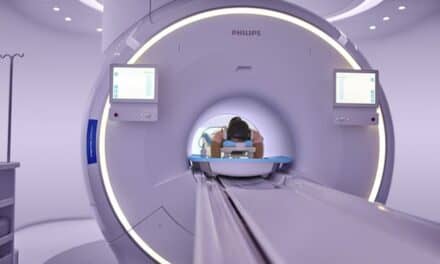By Julie Kirst Julie Kirst
Julie Kirst
Every year in November, the Radiological Society of North America (RSNA) pulls the radiology community out of its Thanksgiving haze into its maze of vendor exhibits, lectures, scientific sessions, and classes. Presenting advancements in imaging technology, this year it will celebrate its 98th Scientific Assembly and Annual Meeting session in Chicago and play host to approximately 60,000 attendees from around the world.
While not on the top of the list to attend for most of 24×7’s audience, RSNA is, however, a destination for many managers seeking the breakthroughs that will change the face of radiology.
Sessions of interest for health care technology management professionals include a session about very-high-speed plane wave transmission imaging with ultrasound, and a symposium for hospital administrators that will look at anticipated technology advances.
Another session will address a topic gaining a lot of traction and of particular interest to clinical/biomedical engineers—platforms and security for mobile computing devices. This will cover the two main platforms for tablet mobile devices—the Apple iOS and the Google Android operating systems. While comparing and contrasting their differences, it will also focus on the security needs and other issues, such as image capture from the internal camera and uploading the images to the PACS or EMR. Understanding the capabilities and security needs will become more important as the use of mobile devices expands.
For those interested in attending but don’t have a budget for hotels and other expenses, RSNA will also offer a virtual option concomitant with the meeting that will feature live sessions, special lectures, and other aspects of the event.
Given the innovative nature of RSNA, I thought it might address the upcoming medical device tax, but after searching the program, I did not find a reference to it. Part of the Affordable Care Act, the medical device tax is set to go into effect after December 31, 2012. The tax—2.3% of the price for which a manufacturer or importer sells a taxable medical device—applies to the sale of taxable medical devices by the manufacturer or importer.
When news of this tax broke with the President’s new health care bill in 2010, organizations such the Medical Device Manufacturers Association (MDMA), a national trade association, and AdvaMed—whose member companies produce medical devices—expressed concern regarding the tax’s impact on innovation and smaller businesses.
For clinical/biomedical engineering departments, it waved a cautionary flag that placed uncertainty on upcoming budget planning for new devices.
According to the MDMA, earlier this year the US House of Representatives repealed the tax, but as the bill languishes in the Senate awaiting a decision, December 31 approaches.
While medical device companies anticipate the final outcome and attempt to determine how this tax will affect them, some companies have begun streamlining operations to prepare for it. At the same time, biomeds contemplate how much of this excise tax OEMs will pass to them via new equipment acquisitions.
Have you made provisions for this tax in your acquisition budget? Do you think it will negatively influence future device advancements? If you gather with innovators in Chicago this November, I would like to know if they discuss this topic. If you attend RSNA, share what technologies fascinated you by blogging with us at 24x7mag.com/biomeds-blog. 24×7 November 2012
Julie Kirst is the Chief Editor of 24×7.





